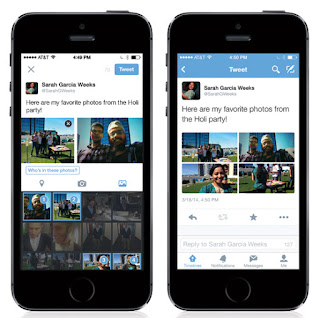New job openings announced, so where's the bad news?
Most everyone in our industry is talking about a downturn for 2016. Yes, there are bland numbers coming out of agencies in advertising and media, but really, it's not that dire. There's a slowdown in growth, but I don't see a downturn – unless of course another 2009-like global economic meltdown happens. Oil seems to have hit the lowest possible, and recovery seems to be on the horizon because production may be slowing down on that front. Which means, there is hope yet. Or thereabouts.
MCN – the group that employs my services – the Middle East Communications Network, one of the largest advertising, marketing, media and PR agency groups in the Middle East region, yesterday announced a whole bunch of new job openings on their website. The jobs are across the region, the positions are in advertising, media, PR and digital spacializations, and they're a bit more than a handful. So, that is a good sign then. Here they are, as of March 2016...
Business
Director - Media - Dubai
Looking for candidate with 10+ years’ experience in both
offline and digital media, MBA educated, able to strategize, challenge, mentor
and lead a team.
Branded Content Director – Media - Dubai
Looking for
candidate with 8 + years experience in developing communication strategy on
international, regional and local clients.
Regional Strategy Director – Media - Dubai
Looking for candidate with experience
in managing the entire strategy process development, also responsible for fronting the strategy
side of new business pitches as well as on-going clients.
Associate
Media Director - Dubai
8+ years of experience in media planning and buying, preferably for a Media agency within the
region, but international experience also valued. Knows how to develop
objectives, strategies and plans for clients and also able to develop the
skills and knowledge base of the team.
Digital Media Planner – Cairo
Bachelor degree completed ideally in
marketing, business or related subject with expertise in digital and social
media. 1-2 years of experience in media department or media company.
Senior Media Planner – Dubai
4 – 5 years of experience in media
planning and buying. Understand marketing objectives and strategies for all the
team’s clients and ensure objectives are on target.
Media Manager – Dubai & Jeddah ( 2 roles
)
5-6
years of experience in media planning and buying, preferably
for a Media agency within the region, but international experience also valued.
Knows how to develop objectives, strategies and plans for clients and also able
to develop the skills and knowledge base of the team.
Media Operations Executive
– Dubai
Bachelor degree completed ideally in
marketing, business or related subjects. 12-18 months in media department or
Media Company.
Social Media Executive - Jeddah
1 year of experience in social
media advertising including Facebook, Twitter, Quora, YouTube,
etc. Prefer experience within the region.
Online
Community Manager - Dubai
2+ years of experience in social media advertising
including Facebook,
Twitter, Quora, YouTube, etc. Prefer experience within the region. Up
to date and knowledgeable on social media best practices.
PR
Group Director- Dubai
7+
years of experience in corporate communication, managing people, PR agency
handling FMCG clients.
Creative
Operations Manager - Dubai
5+
years of experience in effective
management and control of the creative output of client and internal projects
from a traffic context.
English
Copywriter – Dubai – Mid & Junior (2 roles)
Copywriter who is looking for their next step, wants to
join a global creative agency, able to work seamlessly online and offline,
lives and breathes advertising and is of course talented. Send
your CV and portfolio link.
Senior
Art Director - Dubai
8+ years in being the working wheel within the Creative
groups in the department with award winning experience. Is currently working as a Senior
Art Director and is looking for their next step. Wants to join a global
creative agency, able to work seamlessly online and offline, lives and breathes
advertising and is of course
talented. Send your CV and portfolio link.
Digital Designer
- Dubai
3+ years of digital design
experience, with a passion for excellent design skills and digital. The work demands creative flair,
up-to-date knowledge of industry software and a professional approach to time,
costs and deadlines.
Multimedia Designer – Dubai
Looking for a graduate or up to 2 years’ experience,
design oriented bachelor’s degree, must have photography skills, typography and
art illustration skills. Must be based in Dubai.
Digital Analyst – Dubai
3+ years
experience in Web, Mobile, Search, Marketing, Campaign, Competitive,
Social Consumer Analytics. Also well
versed with Omniture, Adobe Site Catalyst, Discover, Report Builder and Google
Analytics for executing analytics projects.
Account Executive - Dubai
1-2 years
experience in Advertising/Marketing. Strong facilitation and presentation
skills, both in preparing materials required and in delivery. Fresh graduate
with advertising degree can also apply.
Studio Operator – Dubai
Looking for someone with quite diverse skills –
finished art (online and offline), re-touching, as well as some design skills.
Graphic Designer – Dubai
2+ years’ experience working on solid
graphic design projects that incorporate new technology. Have a passion for
design and a good portfolio.
Creative Conceptualizer – Dubai
3+ years of experience in developing
holistic creative retail campaigns across ATL, BTL and Digital and also
responsible for creating the work, presenting it to a client and producing it.
Graduates
Whether you're starting a career in
Media, Advertising or PR, there’s an opportunity for you at MCN. You need to be
creative, articulate, comfortable in analyzing data and highly organized. In
addition to this you will need to have a strong team spirit and a ‘can-do’
approach. From time to time, job opportunities open up at MCN.
There are no opportunities available at this time,
however, we courage you to share your profile for our future reference.




















